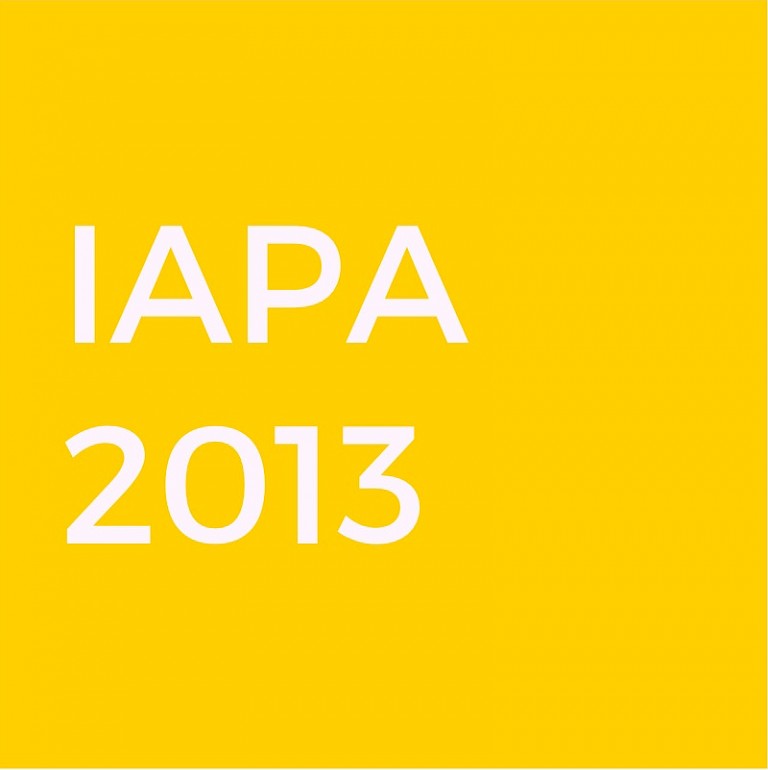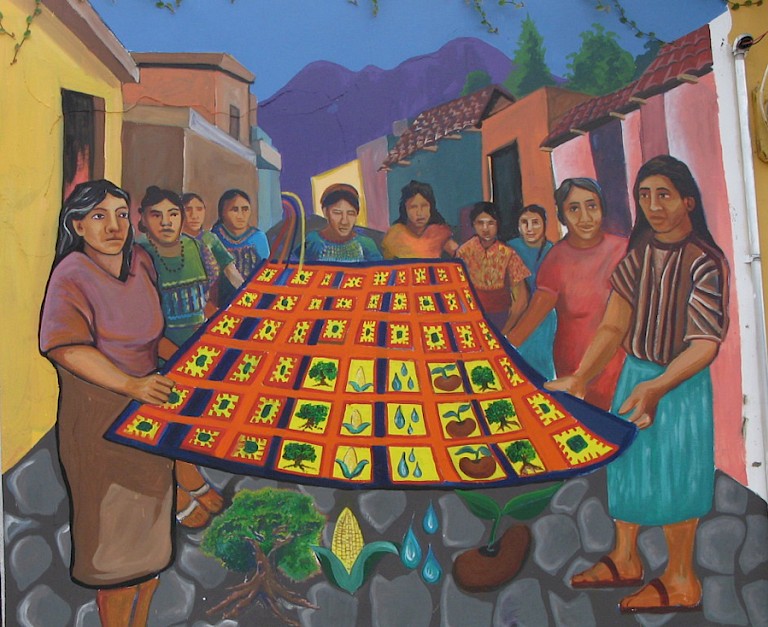



For the townspeople this project represented an unusual opportunity for free expression. They had never had a workshop on mural design nor the opportunity to work on a large collaborative project. The enthusiasm of the participants buoyed Baca and her team throughout the project.
Although there were existing murals in the city, they served as tourist attractions and were branded by the existing mayor’s political party with obvious political intent. Baca’s murals gave expression to the concerns and issues of the community without any overt political affiliation. The artists strived to include all the ideas brought forward through consensus. Final designs were presented to the whole community for approval.
The spirit of collaboration was great and Baca and her team stayed up late refining the design. The locals put up lights so that painting and transfers could go in the night. In the morning young people would be sitting on the sidewalk awaiting an opportunity to paint throughout the day.
Baca’s overall design wove the various threads that emerged from the workshops throughout the various murals. An important theme was the issue of the environment. The local population had several major environmental concerns, including access to potable water affected by political patronage issues, excessive water pollution due to pesticides from neighboring coffee fields, and smoke from pesticide-laden wood used for cooking indoors, which leads to enlarged hearts and lung disease.
Another important theme was the protection of children. Artists chose to depict the issue of hunger, education and play in a community where children are faced with the need to work in the coffee fields and cannot go to school.
The theme of indigenous identity and roots was treated at length and woven throughout the murals. This became a controversial theme.
Another controversial theme was that of gender equality, which was also woven into many of the murals. Up to eighty percent of the women in the region are thought to be victims of violence. Women have a tradition of weaving their personal, communal and universal stories into the cloth they use for their blouses. Images of proper and improper behavior toward women and families were depicted in the painted weavings. The weavings themselves offered an excellent metaphor for social cohesion.
The mural project became victim of political strife eight months later after the Arena Party leader decided to come back to his native Ataco. He had recently been caught beating his wife with a gun in what had once been a killing field. The murals were seen as an indictment against him and his party and were seen as instruments of the opposition party. This precipitated the defacement of over half of the murals, especially those dealing with violence against women. Murals depicting indigenous roots were also defaced, as they were thought to be linked to the opposition party. These murals were whitewashed and repainted by the mayor.
All copyright belongs to Shanghai Academy of Fine Arts, Shanghai University.



